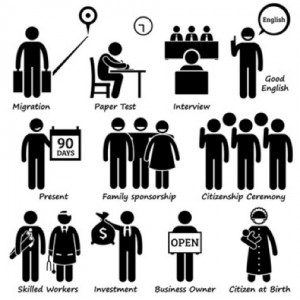If you are the holder of a Temporary Work (Skilled) Visa (subclass 457), employed in regional Australia (that is any area other than the Gold Coast, Brisbane, Newcastle, Sydney, Wollongong or Melbourne) and you’re considering Permanent Visa options for you and your family members, then the Regional Sponsored Migration Scheme (RSMS) Visa (subclass 187) is a great option for you.
There are three steps to the subclass 187 application process, depending on which ‘stream’ you qualify for.
- Firstly, the employer will need to apply to the relevant Regional Certifying Body (RCB) to certify your nomination. In South Australia the RCB is Immigration South Australia (Department of Manufacturing Innovation, Trade, Resources and Energy).
- After receiving the Certification, the second step is for the Employer to apply to the Department of Immigration and Border Protection (DIBP) to nominate you. The RCB and the DIBP will review the business evidence to determine:
- whether the nominating business has been actively and lawfully trading;
- the position is genuine, skilled, full time and for no less than 2 years (from visa grant), market rate salary; and
- employment terms and conditions are in accordance with Australian laws.
The business must also comply with all relevant Australian immigration and workplace relations laws.
- The final step is for you to lodge the subclass 187 visa application with the DIBP. The DIPB will determine whether you meet the age, skills, English proficiency, health and character requirements.
Prior to applying, it is strongly advisable that you determine whether you meet the skills, age, and English proficiency requirements applicable to you or that you are exempt from meeting these requirements. In addition, you and your family members will also need to meet the health and character requirements.
Many applicants do not realise that a visa application can be refused on health and character grounds. Health and character requirements are applicable to you and your family members.
In addition, you and your employer will need to determine which of the following three ‘streams’ is most appropriate to apply under:
- The Temporary Transition
- Direct Entry
- Labour Agreement
If you have been employed for two years, while holding a subclass 457 visa and in the same occupation with your nominating employer then you may consider option one. If you have only briefly worked for your employer and your employer receives State Certification, you may consider option two. The third option is available to 457 visa holders already employed and sponsored under a Labour Agreement.
If you think you meet the requirements, approach your employer and request a nomination for the subclass 187 Permanent Visa for you and your family. If your employer agrees to make the nomination, they should seek legal advice as to their obligations and the process to nominate you and you should seek legal advice in relation to your rights and entitlements to make application for such a visa.
Tips and Traps
It is very important to note that if the employer is lodging their own nomination application that they nominate the correct stream and make sure that they meet the employer requirements, because once you lodge your visa application it will be linked with the nomination lodged. If that nomination is refused or withdrawn, the employer cannot simply re-lodge a corrected nomination application, as it cannot be linked with the previous visa application.
As a consequence, you may have to lodge another nomination and visa application, which means paying the associated application filing fees again. In addition to the filing fees, you may also be up for preparation costs, faced with time restrictions, and visa status issues.
Although your employer will have a fair idea of the process, it is advisable that they seek the appropriate advice and assistance to make the nomination applications.
Feel free to get in touch directly with today’s blog writer, Patrick Quan (MARN 0635149) for advice or assistance with any of your visa application or migration enquiries.

